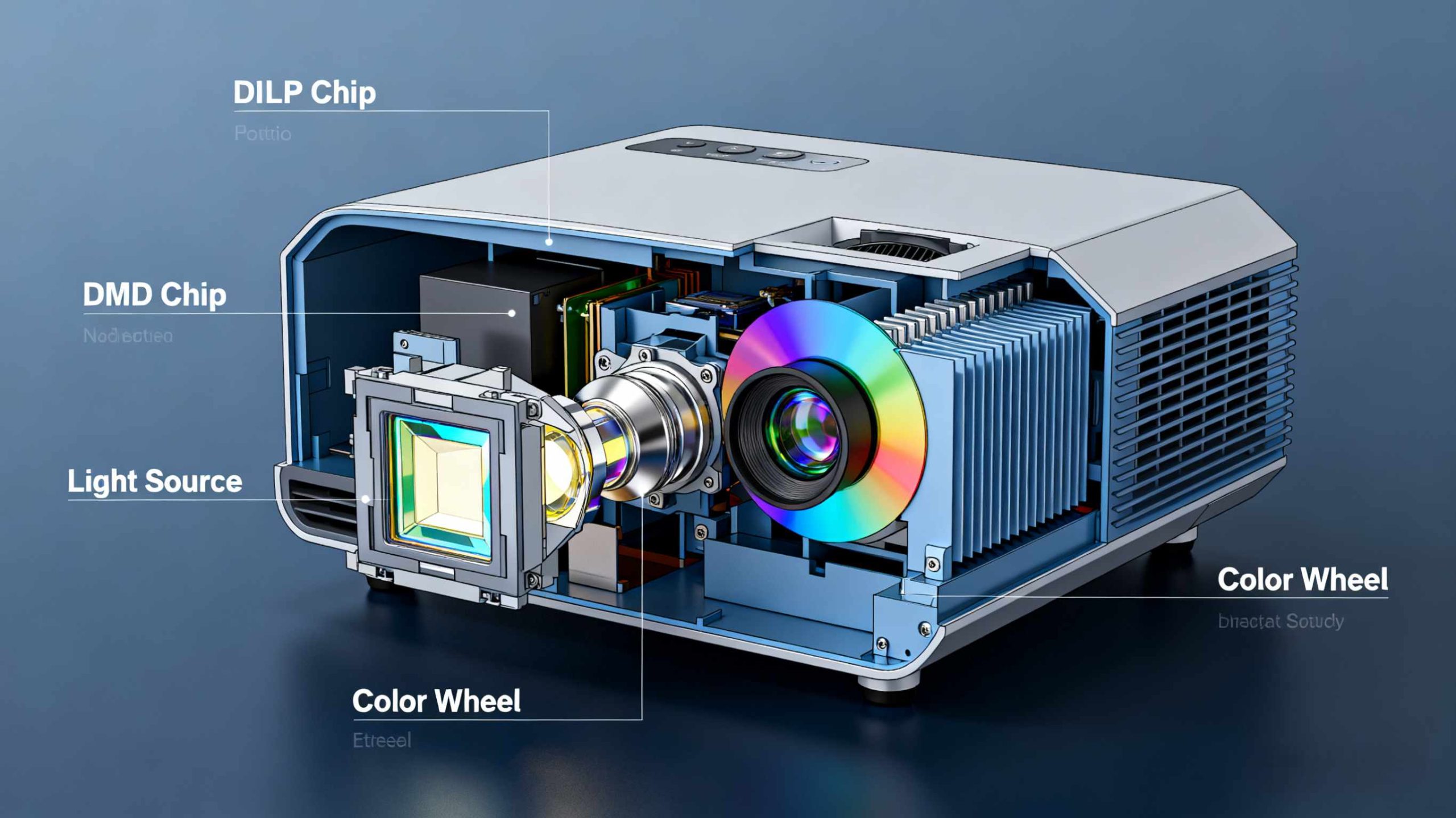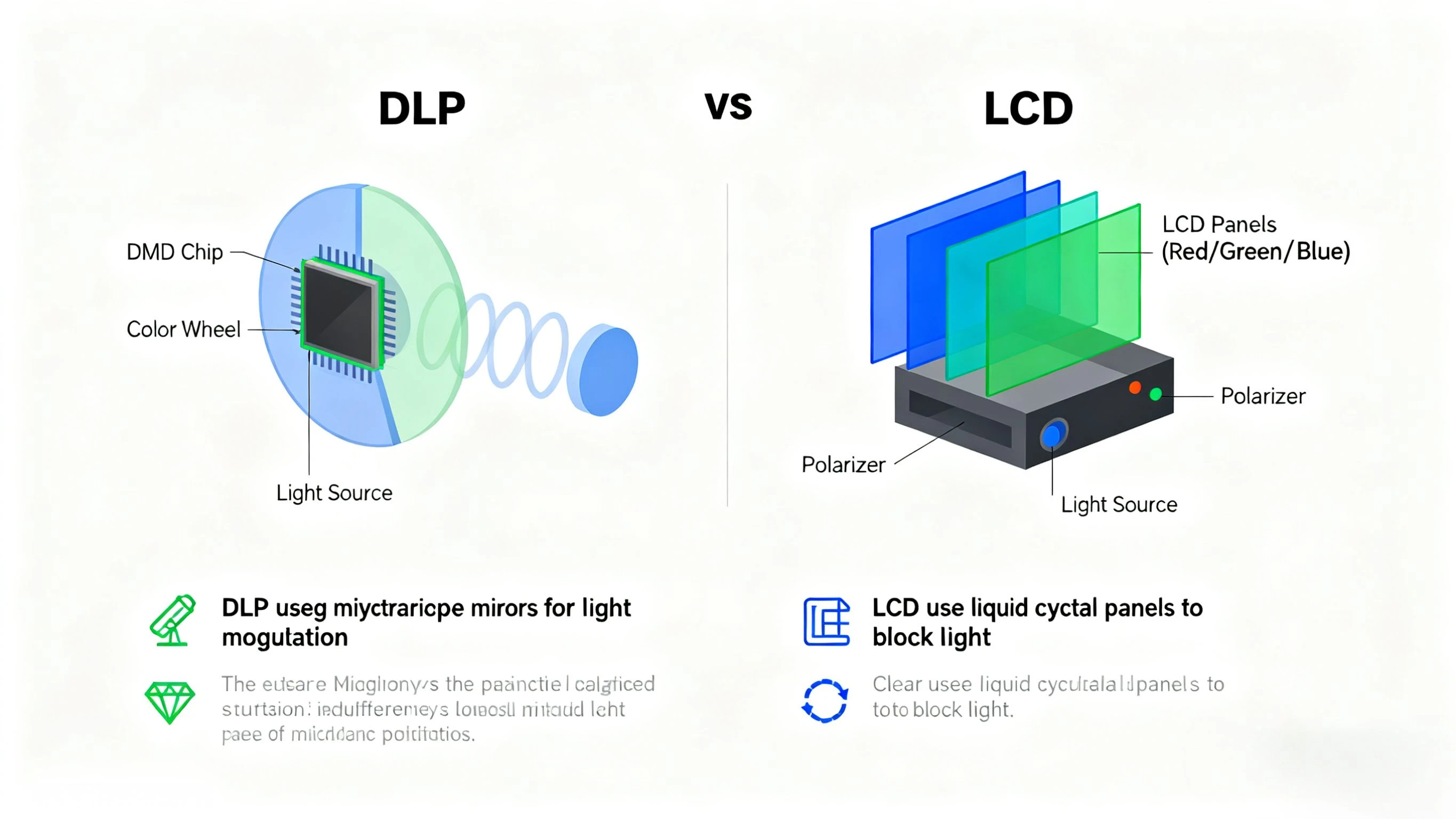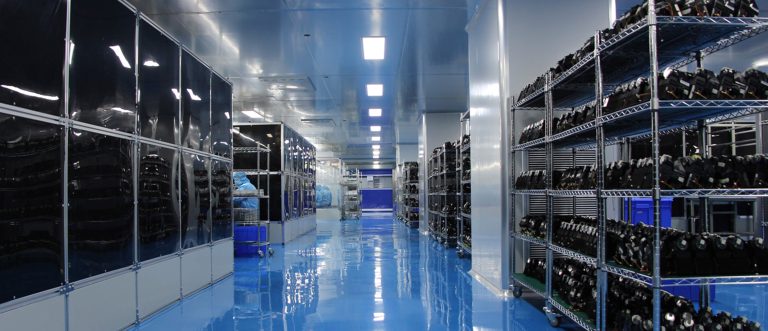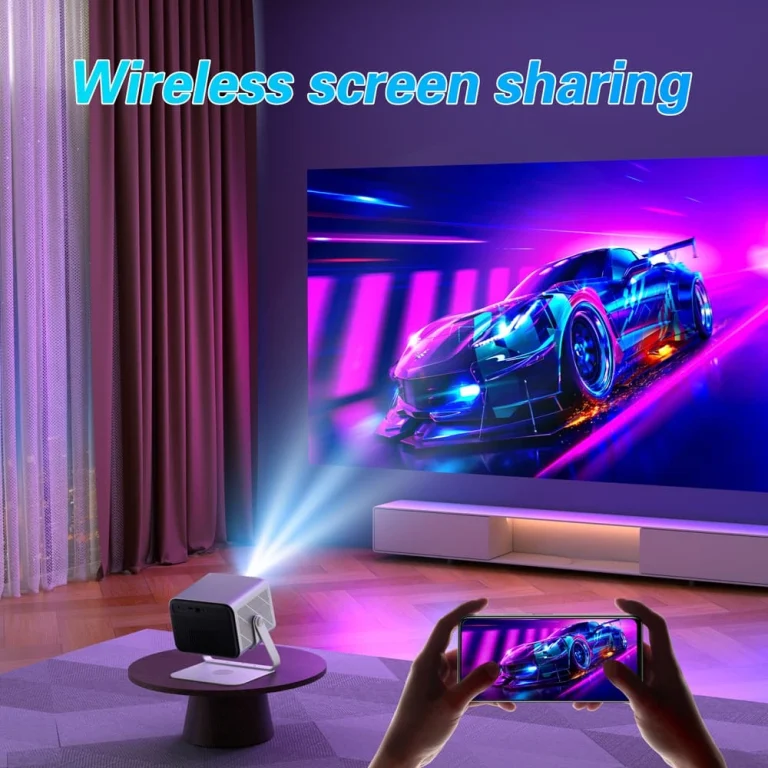Introduction
Projectors have become part of daily life. Walk into a classroom, a meeting room, or even a small apartment set up as a home theater, and you’ll probably see one. Among the many types, DLP projectors keep coming up in conversations. People like them for their sharp images, long service life, and the way they handle video smoothly. But the real question is—what exactly is a DLP projector, and why should anyone care? In this guide, we’ll break down Digital Light Processing technology in plain words, add some real examples, and explain why it matters in schools, offices, and living rooms.

What is a DLP Projector?
A DLP projector, short for Digital Light Processing projector, is a device that uses thousands or even millions of microscopic mirrors to reflect light and build an image. At the center of the system is something called a DMD chip—a Digital Micromirror Device. Each mirror on this chip matches a pixel. The mirrors tilt back and forth at crazy fast speeds to push light toward the screen or away from it.
That’s how the picture forms. It sounds almost like science fiction, but it’s real hardware. The result is a crisp, clear image with solid contrast. When people see a DLP projector for the first time, many are surprised at how smooth the motion looks. Sports, action movies, even video games appear fluid without obvious lag.
How Does DLP Technology Work?
The inner workings sound complicated, but they can be explained step by step.
First, there’s the light source. Depending on the model, this might be a lamp, an LED, or a laser. That light enters the system. Next comes color separation. In older or lamp-based models, there’s usually a spinning wheel with colored segments—red, green, and blue. As it spins, it breaks white light into those colors. In newer laser or LED projectors, the separation is done without a wheel, which cuts down on noise and certain visual effects.
Then, the light hits the DMD chip. Imagine millions of tiny mirrors, each about the size of a human hair. These mirrors tilt thousands of times per second, bouncing light either toward the lens or away. After that, a projection lens gathers all the reflected light and throws the image onto a screen or wall.
Some older DLP projectors showed what people call the “rainbow effect,” a quick flash of red, green, or blue when you moved your eyes fast. Modern projectors have reduced this issue a lot, especially with LED and laser designs.
Key Features of DLP Projectors
So why do users, from teachers to movie fans, stick with DLP? A few big reasons come up again and again.
They’re known for sharpness. Because the mirrors handle light so precisely, images look crisp even at higher resolutions. They also deliver deep contrast, meaning black levels appear darker and whites pop out. That’s something LCD projectors often struggle with.
DLP projectors are also compact. Many models are smaller and lighter, which makes them easier to move from one room to another. And since the chip is sealed, dust doesn’t get inside easily, so maintenance is lower compared to LCD units that need frequent filter cleaning.
Gamers especially like fast response time. DLP chips switch fast, so input lag stays low. That makes a noticeable difference in racing games or first-person shooters where every millisecond counts.
DLP vs. Other Projection Technologies
It helps to compare DLP with its main rivals: LCD and LCoS.
Feature | DLP Projector | LCD Projector | LCoS Projector |
Sharpness | Very sharp, pixel grid less visible | Decent, can show pixelation | Excellent but pricey |
Contrast | Strong, darker blacks | Average | Very strong |
Portability | Compact and light | Bulkier | Usually heavy |
Maintenance | Low (sealed chip) | Needs regular filter cleaning | Medium |
Price Range | Wide: from budget to premium | Usually affordable | High-end only |
This quick table tells the story: DLP strikes a middle ground. It’s not always the cheapest, but the reliability and clarity make it a safe bet. LCD is fine for entry-level setups. LCoS offers superb quality, but it’s costly and heavy.
Applications of DLP Projectors
Education
In schools, dust and chalk particles float in the air all the time. Traditional projectors can clog up and need service. DLP’s sealed design avoids this, which is one reason many classrooms rely on it. Teachers also like the sharper text for slides and diagrams.
Business
Boardrooms and offices run daily presentations. Reliability is critical here. Nobody wants a meeting delayed by a filter cleaning message or washed-out text. DLP projectors stay consistent, showing charts, spreadsheets, and videos with enough brightness and definition to keep everyone’s attention.
Home Entertainment
Movie fans enjoy watching films with better contrast and smoother action. A sci-fi scene full of shadows, for instance, looks far more cinematic on a DLP system. Many smaller home projectors also use DLP chips, making it easier for families to set up movie nights without buying bulky gear.
Portable Projection
Some DLP projectors are so small they fit in a backpack. That portability opens new uses—like outdoor movie nights, pop-up art shows, or even business travelers projecting slides in hotel rooms.
Advantages and Limitations
DLP projectors offer a lot: they’re crisp, compact, and long-lasting. Their design keeps maintenance low, and their speed makes them great for fast video or gaming. On the downside, rainbow artifacts can still appear for sensitive viewers, especially on older models. And while many are affordable, premium DLP projectors can get expensive.
It’s a trade-off, much like choosing between cars. Some are built for speed, some for comfort, and some for balance. DLP tends to offer that balance—strong performance at a size and price that fits different users.
The Evolution of Digital Light Processing Technology

Digital Light Processing has a longer history than most people realize. The first DMD chip appeared in the late 1980s. By the 1990s, the technology found its way into projectors and rear-projection TVs. In the early 2000s, it took over digital cinemas, replacing film projectors around the world.
Today, more than 80% of digital movie theaters use DLP projectors. That’s a serious mark of trust. Over time, the technology has also moved into homes, classrooms, and even pocket-sized devices. With the rise of 4K resolution, smart connectivity, and laser lighting, DLP has kept pace, proving it’s not going anywhere.
Real-World Example
Picture a backyard on a summer evening. Someone sets a small DLP projector on a patio table, connects it to a phone, and projects a 100-inch image on a white sheet. In minutes, friends and family are watching a blockbuster under the stars. That very same technology—once limited to cinemas—is now small enough to bring outdoors for a casual hangout.
Moments like that show why DLP remains relevant. It’s powerful, but also practical.
Toumei Projector: A Reliable DLP Projector Supplier
Behind the projector you see on the table or in the theater, there’s usually a team working hard to improve the technology. Toumei Projector has become known for pushing forward in this space. The company focuses on DLP projectors designed for both personal and professional use. Their products emphasize portability, durability, and user-friendly features. Whether it’s a teacher needing reliable classroom visuals, an office running daily meetings, or a family wanting a compact home setup, Toumei Projector has options designed around real-world needs.
Conclusion
DLP projectors have carved out a strong reputation in education, entertainment, and business. Their clarity, portability, and lifespan make them stand out. No technology is perfect, but Digital Light Processing balances quality with convenience in a way that works for a wide audience. With companies like Toumei Projector continuing to refine the craft, the technology’s future looks even more promising.




